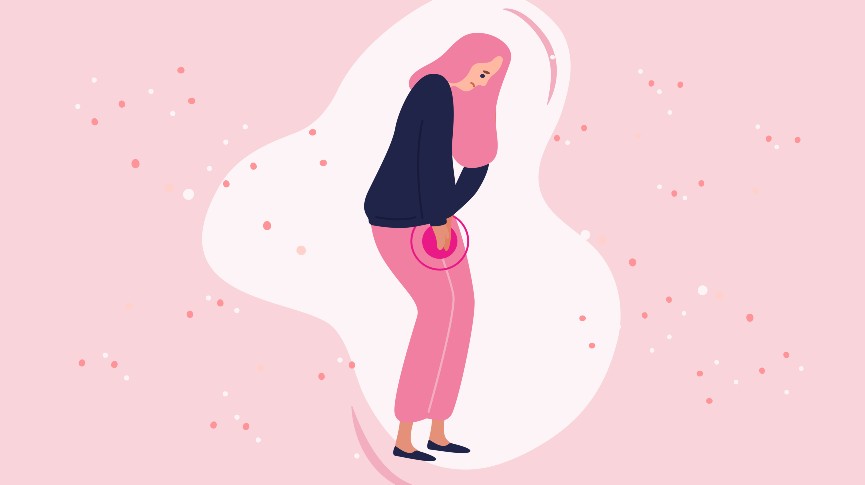You’ve Probably Heard of Them: This is what Pubic Lice Are?

Pubic lice, otherwise known as “crabs” were the butt of many a juvenile joke as an adolescent.
But what exactly are crabs? How do you get them? How do you avoid getting them? We’ve got a lot of questions about these pesky creatures!
What Are They Exactly?
These small parasites that attach to the hair and skin around your genitals affect millions of people each year.
They get the name crabs from their striking resemblance to the cretaceous creature you find at the beach – just much smaller.
How Do You Get Crabs?
Pubic lice are normally spread through sexual contact with someone else who has them, but they can also potentially be spread by sharing towels, sheets, or clothes, but they can’t hang on to smooth surfaces.
Luckily for us, these crabs don’t last long on their own, and typically need a human body to survive.
What Are The Pubic Lice Symptoms?
While some people never exhibit pubic lice symptoms, most people will develop symptoms about five days after they get them.
Some people may think that the rash is caused by something else, but here are some common symptoms of pubic lice:
- Dark or bluish spots on your skin that are caused by the lice’s bites.
- Visible eggs (or nits): These usually come in clumps and are oval and white, yellow, or a pearly color.
- Visible pubic lice: They aren’t always visible to the naked eye, but they look like tiny crabs that are whitish-gray or tan, they may be darker if they’re full of blood.
- Feeling irritable, run-down, or feverish.
And of course, the most tell-tale symptom…feeling incredibly itchy around your genitals.
Although incredibly itchy and uncomfortable, crabs are harmless and easily treatable.
What do pubic lice look like?
Pubic lice are usually pretty easy to self-diagnose. You can usually tell from the itching, visible nits or lice, or from finding out that someone you had sexual contact with has them.
If you’re unsure, you can use a magnifying glass to investigate closer or go to a nurse or doctor who can tell you for sure.
Even if they’re not visible, you still could have pubic lice.
If it does turn out that you do indeed have pubic lice, no worries…they’re easy to treat!
How Do You Treat Pubic Lice?
If you’re wanting a professional opinion and don’t have access to a doctor, you can try a community health clinic. If you’re in university, there is usually a sexual wellness clinic you can check out to seek guidance.
Even if you aren’t sure you have pubic lice, if someone you had sexual contact with recently has them, you may still want to use the medication.
You can get rid of pubic lice with a simple topical treatment. These treatments usually come in the form of shampoos, foams, gels, liquids, and soaps. You usually don’t need a prescription for these and can get them over the counter. Be sure to thoroughly wash and dry your towels, bedding, and clothes after treatment in the hot setting. If you feel the need, you can vacuum furniture and rugs as well.
After treatment, the eggs, or nits, will probably still be stuck to your hairs, so you’ll want to remove them with your fingernails or a comb (then toss that comb).
If you do happen to get pubic lice somewhere other than your genitals, you will most likely need a special prescription from your doctor.
If you have a current sexual partner, be sure they’re treating themselves too, so that you don’t play pass the crabs. Don’t resume sexual contact until you’ve both finished treatment.
If you’re still experiencing symptoms after nine to ten days, try all these steps over again.
Are They The Same as Head Lice?
Although they both like to make an unfortunate home in your hair, head lice and pubic lice are not the same things.
Pubic lice, however, tend to be fans of course hair. This is why you can find them on other areas of your body like chest hair, eyelashes, beards, moustaches, armpits, and eyebrows.
Although very rare, it is possible to get pubic lice on your head.
Can You Get Them if You Remove Your Pubic Hair?
Pubic hair removal is pretty common these days.
Whether it’s completely removed, a simple bikini wax, or a trendy “hair-do”, many people choose to remove all or some of their pubic hair for personal reasons.
Can you still get pubic lice then?
While you can still get crabs if you remove your pubic hair, it does greatly reduce your chance of getting them.
Still, pubic hair removal is a personal decision so don’t let something like crabs persuade you one way or the other.
You’re Not Dirty
If you happen to get pubic lice, it does not mean that you’re dirty or that there’s anything wrong with you. These things simply happen and are part of living on this planet.
Be sure to tell anyone you’ve recently had sexual contact with that you have them. You can get an idea of how to approach this conversation here.
While it’s important to use condoms and get tested to prevent the transmission of STIs, condoms do not protect you from getting pubic lice. Although pubic lice isn’t an infection, it’s important to continue to destigmatize sexually transmitted infections. Instead let’s promote discussions and education around them, and every area of reproductive health and sexual wellness.

Natasha (she/her) is a full-spectrum doula and health+wellness copywriter. Her work focuses on deconstructing the shame, stigma, and barriers people carry around birth, sex, health, and beyond, to help people navigate through their lives with more education and empowerment. You can connect with Natasha on IG @natasha.s.weiss.


